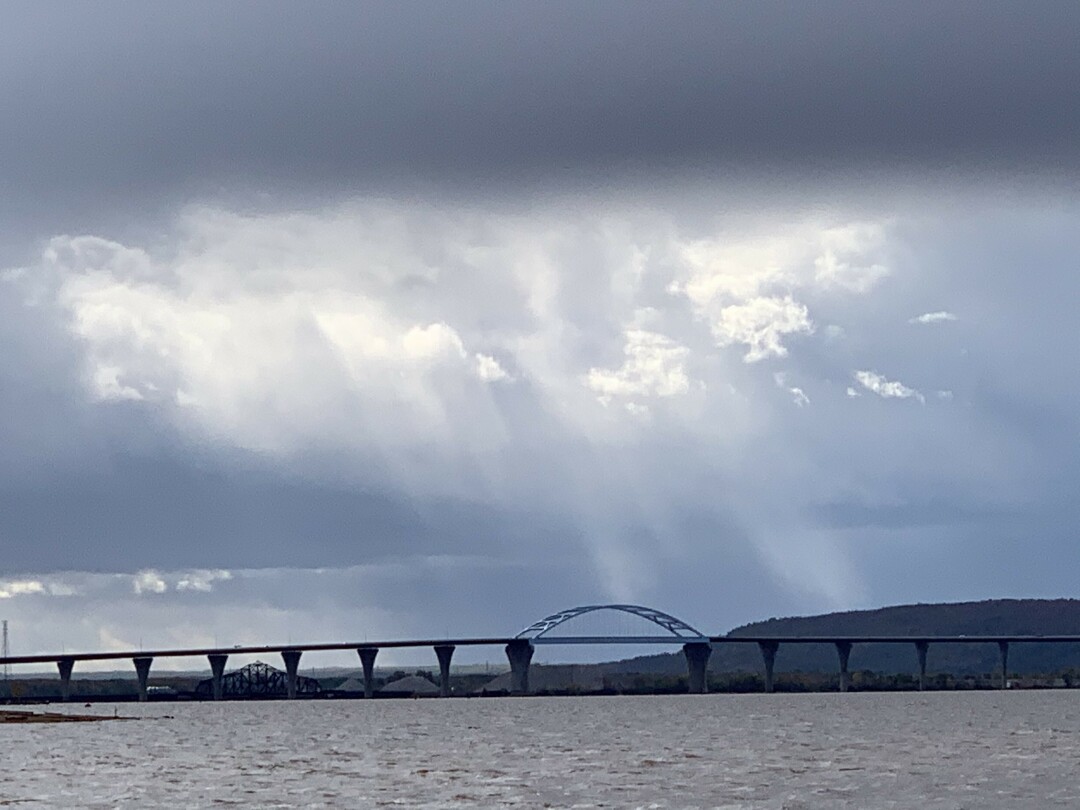A city from the past or for the future?
Photo: Michael Burbul
Seven years ago, the cover story for the September 2013 issue of National Geographic was “Rising Seas: How They Are Changing Our Coast Lines.” It reported that 136 large coastal cities were at risk from sea-level rise, 40 million people were at risk in these cities and there were $3 trillion in value of assets at risk. But what caught my attention was a statement by Klaus Jacob, a geophysicist at Columbia University. Speaking about the urgent need for the entire New York metropolitan region to develop a master plan to insure that any future construction will at least not exacerbate the hazards from rising seas, Jacob said “The problem is we’re still building the city from the past.”
In Duluth, are we still building a city from the past? Or, are we taking the initiative to build a city for the future?
In his book “Plan B 4.0: Mobilizing To Save Civilization,” Lester R. Brown presents several key themes to making a city “eminently more livable.” Brown talks about the need to design urban transport systems that provide mobility, low-cost transportation and a healthy urban environment through a combination of bus lines, bicycle paths, pedestrian walkways and rail lines. Also, Brown explores what he considers the obvious benefits of urban gardening and locally produced food as well as integrating squatter settlements into urban life in a more humane and organized way. And Brown stresses the importance of getting people out of their cars and more in touch with nature.
Richard Louv, in his book “The Nature Principle,” writes about how the most vibrant cities of the 21st century will be those with an urban environment enriched by both natural and re-natured habitat. In particular, Louv mentions how what he calls “redundant shopping centers” could be turned into mixed-use ecovillages with a higher residential density and more habitat for nature. Louv also talks about urban agriculture and the “dream of an edible city” in which he cites a report by Rutgers University and members of the Community Food Security Coalition’s North American Initiative on Urban Agriculture that highlights that a third of the two million farms in the United States are located with metropolitan areas and produce 35 percent of U.S. vegetables, fruit, livestock, poultry and fish.
On Jan. 23, 2019, the Dezeen website reported that while many cities design tidal barriers and sea walls to address climate change that continues to develop “exponentially,” a more sustainable approach would be to incorporate the water by integrating landscape and architecture. “To survive, cities will have to embrace their environmental aspect.” The article stated that many projects “highlight a common false dichotomy” in seeing the city and the environment as separate, even as “antagonists,” and that cities must remember that they are environments and ecosystems in themselves.”
And in September of last year, a U.N. News story stated that huge gains, in terms of reducing harmful gases, can be made by changing how we plan, build, manage and power our cities. “Well designed, compact, walkable cities with good public transport greatly reduce our per capita carbon footprint.” The story also reported that cities should not be planned around cars but people and should invest in zero-carbon public transportation, foot-paths and protected bike lanes. The large carbon footprint created by cities results from poor planning and layout. Low-density suburban sprawl with little public transport and houses far from work and shops means more cars on the road emitting carbon dioxide. The story promoted “climate adaptation” and argued that cities adjusting to actual or expected future climates is a sound investment.
So, as cities plan to address climate change, it’s imperative that we ask ourselves: For Duluth, are we building a city from the past or for the future?
If we keep spending money on building and maintaining roads and parking lots for cars, and not invest the same time and energy into a walkable city with protected bike lanes and zero-carbon public transportation, then we’re building a city from the past. If we don’t integrate Lake Superior into the landscape and architecture of Duluth, then we’re building a city from the past. If we market the city to large out of town grocery chains and not help create a local food economy, then we’re building a city from the past.
If we want a city for the future, then Duluth must embrace its environmental aspect. We must create an urban environment that is enriched by both a natural and re-natured habitat. We must explore and endorse climate adaptation plans and policies. We must develop an integrated transport system that prioritizes walking and biking. We must build a local economy with a low carbon footprint.
Tone Lanzillo, a member of the Loaves and Fishes community in Duluth, is coordinating the Duluth/365 project, asking people to engage in various climate change actions within the next 365 days.

